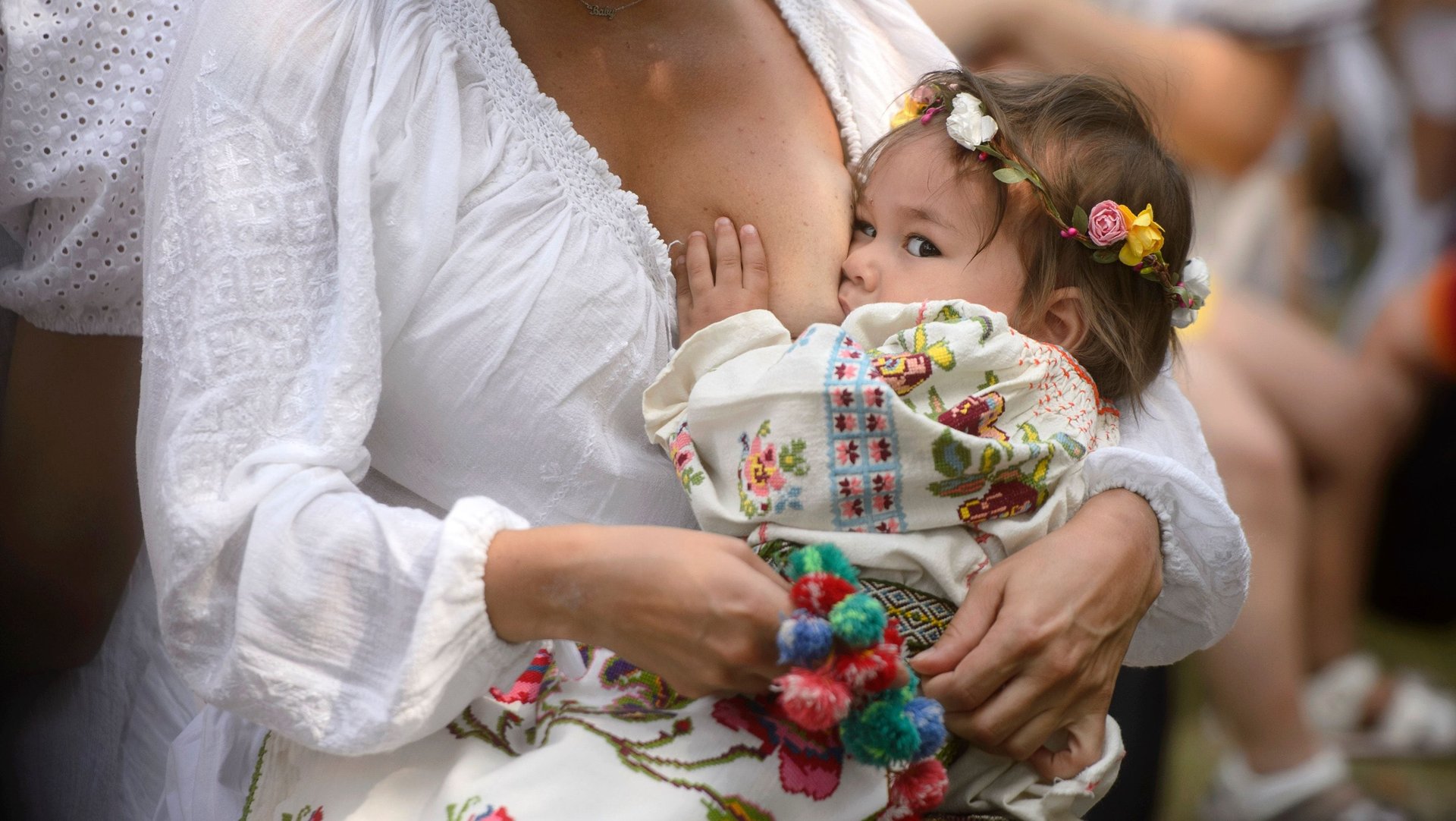The simple post-birth step that dramatically increases babies’ chances of survival
Mothers who breastfeed their babies within an hour of giving birth offer their newborns the best possible start to life (pdf). But three out of five babies around the world aren’t breastfed in that timeframe—putting them at risk of disease, developmental delays, and infections, according to a new report (pdf) by the World Health Organization and the United Nations Children’s Fund (UNICEF).


Mothers who breastfeed their babies within an hour of giving birth offer their newborns the best possible start to life (pdf). But three out of five babies around the world aren’t breastfed in that timeframe—putting them at risk of disease, developmental delays, and infections, according to a new report (pdf) by the World Health Organization and the United Nations Children’s Fund (UNICEF).
Research has shown that in countries with poor water quality, early breastfeeding leads to lower infant mortality rates. But in 2017 alone, about 78 million babies were not breastfed within the first hour of life, most of them born in low- and middle-income countries.
The reasons can often be traced to outdated practices in hospitals or health facilities, as well as cultural factors in certain countries. Some hospitals give newborns infant formula instead of breast milk, for example, while other health workers separate mothers from their babies immediately after birth. Meanwhile, the rise in elective C-sections in some countries means that some babies are delayed in breastfeeding while their mothers recover. In Egypt, just 19% of babies born by C-section are breastfed within an hour of being born, according to the report, compared to 39% of babies in Egypt who are born via vaginal delivery.
All this is a potential problem because a mother’s milk acts as the first immunization babies receive. Thanks to a component known as colostrum, which is rich in antibodies, the milk protects babies against many infections and disease while helping to regulate babies’ developing immune system. The benefits are particularly strong in places with poor water quality, since breast milk can help protect infants against contaminants.
Breastfeeding during the first hour of life also facilitates skin-to-skin contact between a mom and her newborn. That’s good for them both. The feeling of a baby suckling at the breast stimulates oxytocin release in the mother, reducing maternal bleeding after the birth, giving her a sense of calm and happiness, and stimulating the flow of milk from her breast. For babies, skin-to-skin contact with their mothers in the first hours of life supports optimal brain development and facilitates attachment.
Waiting to breastfeed a newborn, even for a few hours, can actually increase babies’ chances of dying. Researchers have shown that the longer babies need to wait to breastfeed, the greater the risk. A 2017 study published in PLOS showed that, compared to infants who were breastfed less than an hour after birth, babies who were breastfed between two to 23 hours after birth had a 33% greater risk of infant mortality.
It’s hard to separate the benefits of breastfeeding from the socioeconomic factors that could also help explain why breastfed babies have better outcomes. But based on the evidence we have, the consensus advice is to breastfeed if it’s an option.
So, what’s the solution? According to the report, it’s more support for new moms and their newborns, with health-care workers who understand the science behind breastfeeding and are trained to help mothers figure out how to position their babies and get them to suckle. The potential payoff of changing public health policy to favor breastfeeding in the first hour of life is huge: According to the report, “improving breastfeeding practices could save the lives of more than 800,000 children under 5 every year, the vast majority of whom are under six months of age.” But the report emphasizes that this is a systemic, not an individual, issue. “Mothers cannot be expected to do it alone.”
This post has been updated.
Read more from our series on Rewiring Childhood. This reporting is part of a series supported by a grant from the Bernard van Leer Foundation. The author’s views are not necessarily those of the Bernard van Leer Foundation.